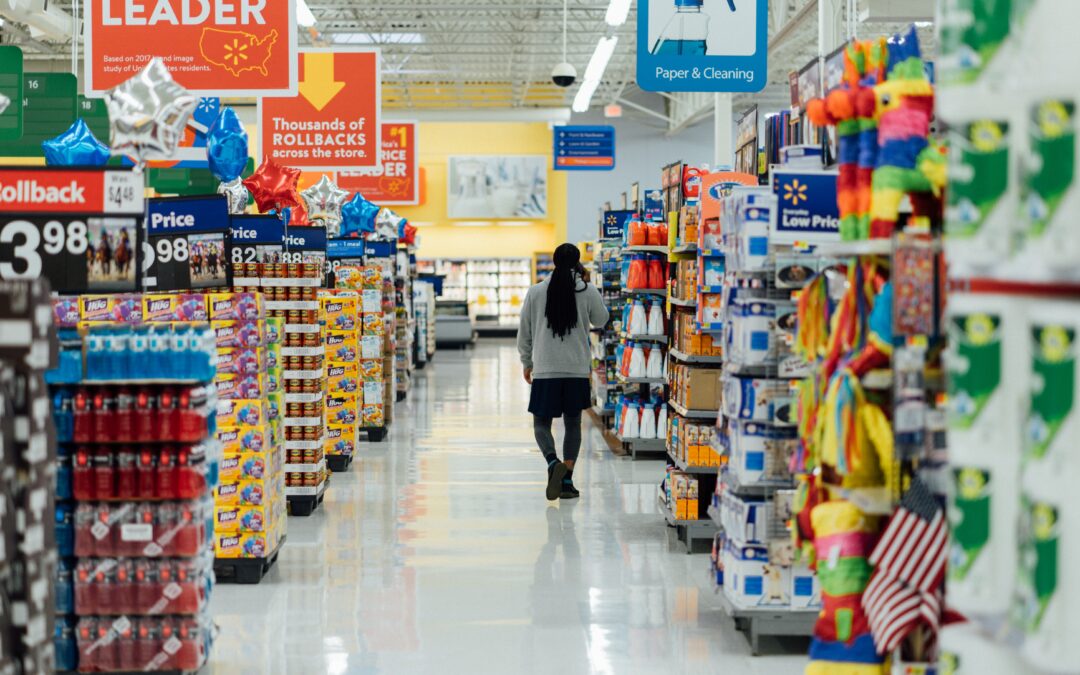Some have called it the “Retail Apocalypse” others called it “Ugly March”, and soon, we’ll be hearing about “Hideous April” too. But there’s no denying that businesses, especially those in retail, were some of the hardest hit during this pandemic.
The U.S. Commerce Department reported that retail spending in March fell by 8.7% from the previous month, the most significant number on record since 1992. But there have been glimmers of hope and growth, specifically in grocery stores and retailers like Walmart.
According to The Wall Street Journal, internal documents show sales surged 20% during the month of March compared with the same period a year ago. Walmart has been able to do this thanks in part to its eCommerce and measures put in place to ensure the safety of their associates and shoppers.
Long-term Predictions for Shopper Behavior
Both retailers and consumers will be feeling the impact of this pandemic long after a vaccine is available and quarantines are lifted. Here are just some of the permanent shifts in consumer behavior that retailers need to start preparing for.
The accelerated shift towards eCommerce, particularly in grocery:
In the last few months, we saw a large segment of consumers who tried buying their groceries online for the first time. According to a Numerator survey, 37% of click-and-collect shoppers were new users in March. Basket size also increased for click-and-collect as consumers stock up. This trend will likely continue as long as the pandemic lasts and as states slowly ease off stay-at-home orders. eCommerce sales, in general, are expected to surge.
Still, according to the U.S. Chamber of Commerce, “grocery sales are where the biggest long-term impact could occur.” We’ve already seen grocery delivery platforms such as Instacart, Walmart Grocery, and Shipt generate huge spikes in sales between March and April. According to a Food Navigator USA.com survey, in 2020, 30% of all consumable’s purchases will be auto-replenished online.
With increased adoption rate of online grocery pickup and existing online grocery pickup shoppers shifting more of their spend to online, brands that invest now in online will be poised for long-term success.
Increase in stock up and bulk shopping:
We expect to see continued shifts to larger pack sizes across various product categories as people replace on-premise and away-from-home consumption with at-home consumption, particularly in beverage alcohol, non-alcohol, and snack categories. We also anticipate that fresh products will rebound as pantry items are used.
In an interview with the University of Arizona News, associate professor Sabrina Helm said that this pandemic may trigger stockpiling behavior. “This experience of scarcity and under-preparedness for disasters likely will impact our consumer behavior going forward. […] It may also make many consumers consider keeping safety stock inventory at home on an ongoing basis.”
Fewer trips to the grocery, weekday trips, and larger baskets will be the new shopping pattern until COVID-19 recedes. Consumers are already adapting to the sheer number of meals they are preparing at home. So expect this trend to continue post-pandemic.
Preference for local products:
Now more than ever, consumers want transparency about where products are sourced – from farm and factory to distribution. According to a Nielsen report, promoting a product’s local origins could help manufacturers and retailers ease and satisfy consumers’ concerns. In a Nielsen survey, 11% of consumers bought products manufactured within their country, while an additional 54% mostly bought local products before the pandemic. They expect those numbers to grow in the post-pandemic retail-scape.
A more significant shift towards healthier products and categories:
The health and wellness industry grew by 6.4% annually from 2015–2017. However, the pandemic seemed to have accelerated that growth at a tremendous rate as sales of health and wellness products surge. Sales of single vitamins grew 166%. Likely, Covid-19 will further increase sales of health and wellness products long after this pandemic has passed. In a Nielsen survey, 83% of respondents say they are likely to repurchase health supplements in the next 12 months, and 58% of consumers will continue buying hand sanitizers.
Walmart’s Future Post-Pandemic
Walmart, like many other retailers, is facing a massive challenge. But it has mostly escaped the fate of other retailers, even recording all-time highs during this pandemic. It has been able to adapt and change to keep supply chains flowing to deliver on their Every Day Low Price (EDLP) guarantee.
In an interview with Talk Business, Walmart CEO Doug McMillon talked in general about the retailer’s short-term and long-term goals saying, “We aren’t taking our eye off the ball as it relates to our financial strength, including areas like inventory management. We’re making important short-term decisions that protect us now and set us up for the future.”
Key Takeaways
There’s no doubt, this pandemic and the inevitable recession will have a lasting effect on shoppers, retailers, and brands. Behavior will not go back to exactly the same. This is to be expected. Just as people learned to adapt to a new normal during the pandemic, we’ll learn to adapt to a constantly-changing “new normal” in the months to come.
As a quick recap, here are the big trends you can expect to see long term:
- Online shopping and online grocery pickup will continue to stay strong and potentially increase.
- Bulk-buying will likely continue.
- There will likely be continued growth for local products.
- Expect continued growth for the health and wellness category.
As we ease towards possible reopening, the real unknown is how quickly the economy will bounce back, and what impact an economic downturn will have on shopping behavior.
If you have any questions about Walmart, please reach out to us. You can contact us here.

